Description
Bring that Autumn Vibe All Year Long
The Croton Rushfoil plant originates from Queensland, Australia, and the particular islands north of this region, such as New Guinea and the Philippines.
Belonging to the Crotonaceae family, the Codiaeum plant grows to 8 feet tall and spreads 4 feet wide in its native habitat. The beautiful plant’s native habitat includes open forests and scrublands in tropical and subtropical regions.
Here is a quick care guide to help you understand Croton Mammey’s needs.
Caring for your Croton
The Codiaeum variegatum is an attractive, evergreen shrub and a great indoor air purifier. As such, it can add to your home’s beauty and help create a healthier home environment.
The vibrant foliage makes it an excellent choice for your indoor plant collection. Although it is a challenging beginner plant, extravagant foliage is usually worth the trouble.
Light
As mentioned, the Croton Mammey thrives in a scrubland environment in its native habitat. In their South Pacific home, these plants receive dappled shade in the open forests. Therefore, they thrive well in bright but indirect light.
Direct sunlight can burn the leaves, though Croton Rushfoils are tough and can usually tolerate sun exposure for a brief period. Typically, they demand indoor placement near a southwest or southeast window ledge.
Soil
Croton thrives well in loose yet rich soil mixes. It requires soil rich in organic matter and prefers a pH between 4.5 and 6.5. In other words, the soil should be mildly acidic to acidic. You want to avoid neutral or alkaline soil at all costs.
Additionally, make sure to plant your Codiaeum variegatum in well-draining soil. The plant likes its roots to be moist but never soaking wet. Peat and coir-based soils are your best options for this plant.
Water
Croton plants get showers at least once every two to three days, if not daily, in their native habitat. For that reason, they thrive well in moist growing environments. Therefore, you should aim to keep the soil moist all the time.
However, avoid watering too much to prevent the soil from getting soppy wet, as it can lead to root rot. Ideally, you should water your Croton Mammey plant when the top two- inches of soil begin to dry out.
Fertilizer
Feeding the plant is the part where beginner plant parents go wrong when growing a Croton Mammy plant. Remember, less is always better when adding fertilizer to the soil.
You should avoid feeding your plant more than three times a year. Ideally, you want to apply fertilizer at the beginning of the spring, summer, and autumn seasons. Croton will go dormant during winter and does not need fertilizer.
Common Issues
As mentioned earlier, Croton is a little challenging for a beginner plant. Certain things like pests and diseases can prevent them from looking their best. Not providing your plant with ideal growing conditions can make it susceptible to pests and diseases.
Pests
Common plant-infesting bugs can attack Croton plants. To protect your houseplant, consider wiping its leaves every month using a neem oil solution. Thrips, pale yellow bugs, are the most common pests that infest these houseplants.
Diseases
Controlling moisture in your plant’s growing environment can effectively prevent diseases that usually affect Croton.
This houseplant is highly susceptible to root rot, a fungal disease that develops when the roots are excessively damp for an extended period. It causes the leaves to change to a yellow color and droop while the rot expands to the stem.
Crown gall is another common disease caused by bacteria. It typically leads to knobby growths on the leaves and roots of the plant.
Pruning
Rushfoil plants do not require much pruning. Nevertheless, you still want to maintain your plant’s shape and control its growth. Pruning can also assist in getting rid of the disease- and pest-attracting dead and damaged leaves. It should ideally be done once a year in the early spring.
Propagation
While they can be a little tricky to take care of initially, Croton Mammy plants are easy to propagate. Once you learn how to take the best care of your plant, you can propagate to create more of its kind. Propagating at the start of its growing season is ideal, so you should do so in early spring.
Potting/ Repotting
Crotons are a slow-growing houseplant, meaning you will not need to repot it too often. Ideally, you should repot your perennial once in two or three years. Usually, roots growing out of or bulging from drainage holes and plastic pots signify that your Codiaeum plant needs repotting.

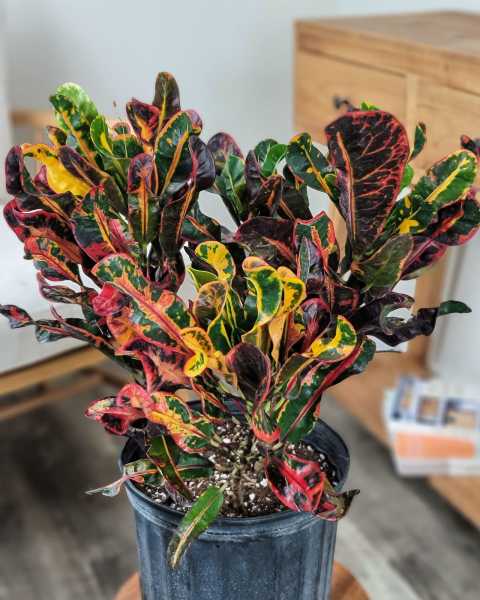
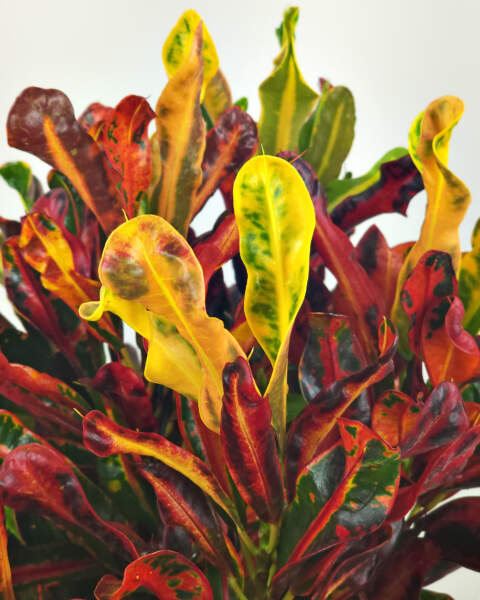
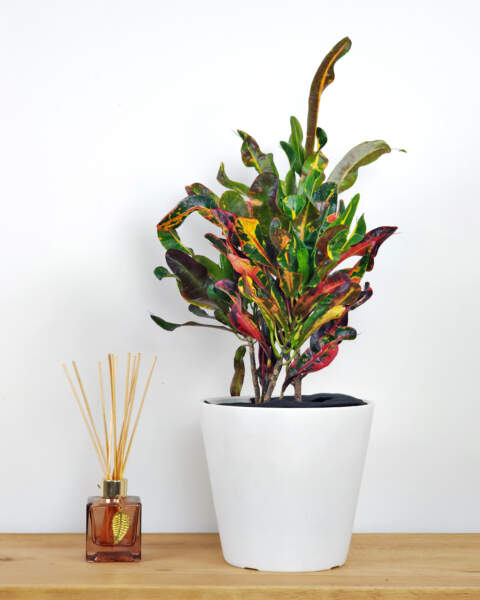
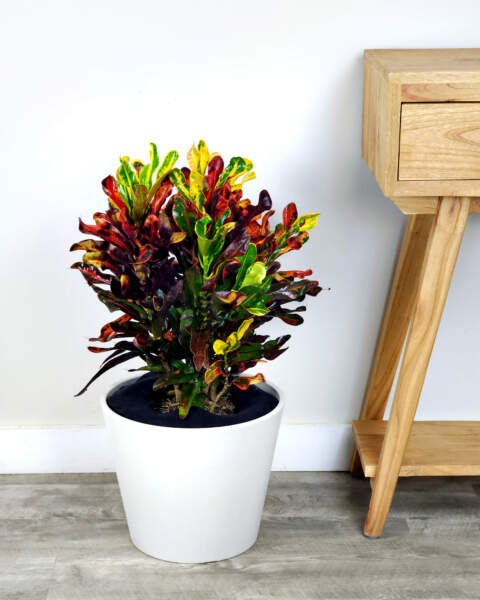






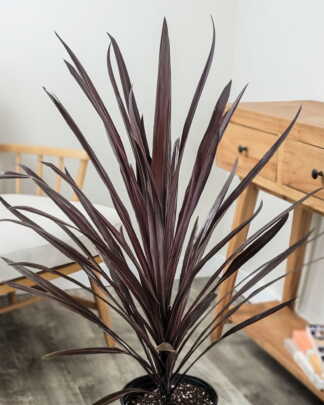
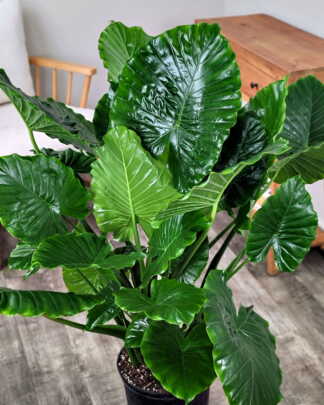
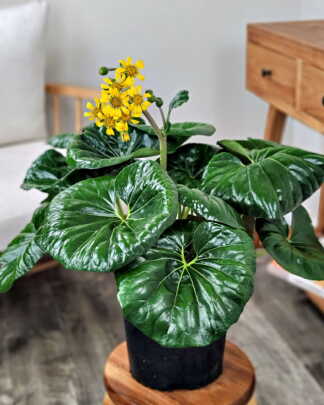

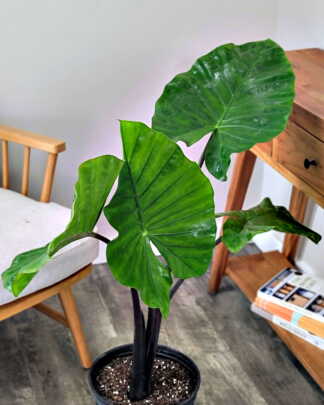


John (verified owner) –
The plant arrived just as pictured, I’m very happy with it.
Benjamin Vestal (verified owner) –
Matthew (verified owner) –
Great plant! Thank you for taking pictures before you ship, what a GREAT IDEA!!!! Thank you for a wonderful experience!
Erica (verified owner) –
Indica is so awesome
Cheryl Feld (verified owner) –
Very nice. Will order from here again
Anonymous (verified owner) –
James W. (verified owner) –
Lovely plant.
John C. (verified owner) –
Anonymous (verified owner) –
strong and healthy
Patrick W. (verified owner) –
fantastic. Colors are so vibrant
Julie T. (verified owner) –
Gorgeous! I’m just starting my plant collection. I was hesitant to purchase plants that were being shipped. They were packaged very carefully and arrived in great condition. I’ve already placed a second order.